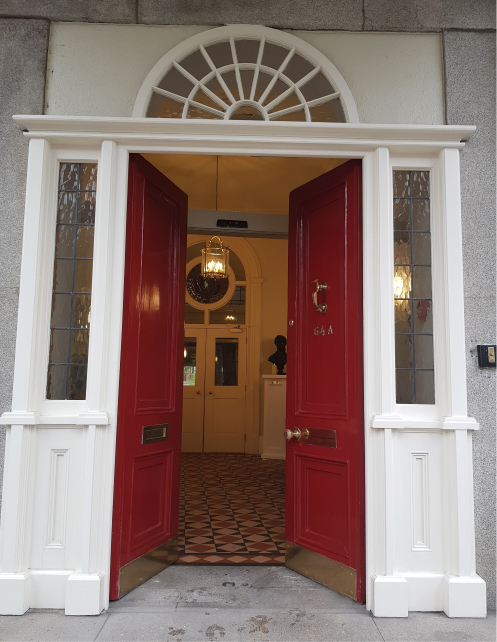Composing Music for the Suscipe
)
All the really good prayers last a lifetime. This is because they are always applicable to our lives, no matter whether we are young or old, comfortable or in trouble, at peace, in distress, in sadness, in joy. The Suscipe of Catherine is in this category. It offers to anyone who prays it a challenge to trust God completely, and to know that what happens every day is in God’s plan.
The first phrase is immense: My God, I am yours for time and eternity. One might just stop there. Really, what else needs to be said? But Catherine does say more, by detailing the way in which this gift of self needs to be helped along by our provident God:
- teach me to cast myself entirely into the arms of your loving providence
- with a most lively unlimited confidence in your compassionate, tender pity.
The center section of her prayer explores the results of the life-gift: she prays that whatever God ordains “may be acceptable.” Whatever God ordains. The best response to the acknowledgement that we are God’s for all time is giving that life back, by putting everything in it in God’s hands. Everything.
Then Catherine gets practical again:
- take from my heart all painful anxiety,
- suffer nothing to sadden me but sin
- nothing to delight me but the hope of coming to you.
This rhythm in Catherine’s prayer suggests certain things about a musical setting. Twice I have attempted to write music for this text. Each time yielded very different outcomes.
The first attempt was in the mid 70’s, and resulted in a choir setting for three female voices. This enabled a thick harmonic structure to portray the depths of Catherine’s words. The opening and closing phrases are musically the same. As both express the eternity in which we find ourselves, the musical intervals are both open and dissonant, reminding us that there is a lot of space in this eternity, and that it cannot be contained in our every day lives. As the song begins, and as it ends, the middle voice rises from to the middle to the top and offers a stretch to the harmony that might be unexpected. Like eternity.
01. Suscipe
Following the opening phrase, and starting with the word teach, the music moves into polyphony, with the three voices entering separately and singing different melodic lines, hopefully portraying the intricacy of living out each day our trust in Providence. The third section, starting with Grant me, is reminiscent of the open sound of the first phrase, just as the text echoes the opening words of ultimate and entire realities. The harmonies collapse into one in the line, that whatever thou dost ordain or permit…just as Catherine collapsed her intentions into the divine desires of God. The music reminds us to do the same.
Then the polyphony returns with the return of the practical and intricate living of daily life. And the final phrase, as described above, repeats the open and stretching harmonies of the first one. This setting hopes to offer a rich portrayal of Catherine’s text, one that reminds us that this business of forever is mysterious, mystical and very merciful.
I wrote a second setting of the Suscipe in 1995 because more sisters wanted to sing the text, and the original version needed a three-part choir. The question in this setting became how to depict the depth of the text while using a single melody line. The choice of a mode, rather than a major or minor key emerged, as did a simple but haunting accompaniment.1 This is a serious prayer and needs some serious notes, with longer ones enabling us to spend time with particular words, and open intervals reminding us of the openness of God’s gift to us and our lifetime response. Some repetition of the melody allows for fairly easy learning by non-singers, while at the same time not forsaking the challenge of singing in a mode and observing different rhythms.
01. Suscipe
This second version takes the time to consider the invitation of eternity, to be serious about our prayer and to make our yes for a lifetime. Catherine, too, understood the stretch which real life requires. She did not avoid it, but embraced it as part of life, part of the song which was hers to sing.
As a “good prayer” the Suscipe is able to sustain us in all our days because it is bold and universal enough to meet our daily struggle and our deepest longings. Working with the text gave me a glimpse into the strength of the practical implications of Catherine’s trust in God as well as her utter confidence in God’s good promises lasting forever. When I pray the Suscipe now, the richness of these convictions opens up for me, causes me to revisit my own beliefs, and gives me something to stretch for on my own path to oneness with God. I never tire of praying it, for it is always relevant, always challenging and always realigning. I rejoice to pray it with Catherine, and in doing so to continue learning from her how to be more trusting, more confident, more merciful.
Messages to: Cynthia Serjak rsm
1 Modes have a different organizational pattern than the major and minor keys which are used in most western music. Several modes can be easily played by using only the white keys on the piano and playing the octave between D and D (dorian mode), E and E (phyrigian mode) etc. The modes sound a little odd to us because we don’t hear them much. Using them provides a fresh, if somewhat disconcerting melody.


)
)
)